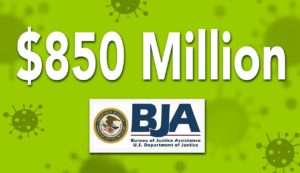The following is part 1 of 2 in our IACP Leadership Series conversation between Benchmark CEO Ron Huberman and the legendary Chuck Ramsey, former Chief of Police, Washington, DC; former Police Commissioner of Philadelphia; and Co-Chair of the Task Force on 21st Century Policing. In this entry, Mr. Ramsey expands on his belief in a holistic approach to police training, education, management and accountability…and stresses the need for officers having an understanding of the history of policing in America.
RH: Chuck, it’s 2020. We’re in a global pandemic. Back in March, I think folks would’ve said, ‘Wait, there’s going to be a global pandemic? I’m finding that hard to believe.’ But once they would wrap their head around that…I think if we would have told them that ultimately we would have a summer of civil unrest, and it would be tied to police misconduct in terms of the perception of police misconduct, the perception of brutality. What happened? What in your perspective, Chuck, made this moment or this summer what it was?
CR: There were a series of very high-profile events that took place, captured on video. George Floyd obviously is one, but there were several others as well that really put police use of force on trial. We live in a world now where we are so connected that it doesn’t matter where something occurs. We saw that really with Ferguson and Michael Brown. It affects us all across the country.
And so, an event can happen, let’s say, in Ferguson, Missouri or Minneapolis, Minnesota…you could be in Austin, Texas, you’re going to have fallout from it. You’re going to have something happen in terms of demonstrations or what have you because people get upset and understandably so. No question about it. Which really makes the need for police leaders to be more proactive in terms of having a holistic approach in dealing with management and early intervention — and to do it in a way that really saves time, saves resources…and understanding that that’s not only a benefit to you as a police chief, it’s a benefit to the community as well. The faster you can identify issues and problems in your department, the better off you’re going to be, both short-term and long-term, which is why I’m so enthusiastic about Benchmark and what you bring to the table.
RH: Chuck, you said police use of force was on trial, right? What have we gotten right over the last few police reforms? You’ve been through all of them, Chuck. We had the professional model, problem-oriented policing, community policing… CompStat was in that mix…up to today. What would you give a high-letter grade for on the police, and what would you say, ‘Hey, folks, we just got to get better at’?
CR: I think we’re bringing better people into policing than we did before for the most part. Again, nothing’s absolute. There are 18,000 police departments in the United States…but just in general and from my experience having worked in Chicago, DC, and Philadelphia, I think the quality of individuals we’re bringing into our ranks are a lot better. I also think that unlike it was when I started, we see the community differently than we used to.
When I first started, at best you refer to community as just the eyes and ears. They had absolutely no voice, no role on anything, but through problem-oriented policing, community-oriented policing, that changed. Now, here’s where we didn’t get it quite right…because we started to build relationships, especially in some of our more challenged communities, but I think we underestimated how fragile those relationships really are.
There was a period of time when we moved away from community-oriented policing, that was the dominant policing philosophy. And because of the tremendous success – this isn’t a knock on New York – but it certainly was something that really changed thinking in policing. They had such tremendous success in lowering their crime through CompStat, through a data-driven approach, that many departments started to then try to copy that. But what they lost sight of is the human part of policing. It’s more than just dots on a map. It’s about human beings — and so you can’t lose those relationships. I think in many instances, and I was guilty of it myself, you become so focused on just putting cops on the dots and so forth that you lose sight of those relationships that really need a lot of care. As a result, when controversy started to surface, those relationships that you would’ve normally relied on weren’t there or at least they weren’t as strong as they could have been.
RH: Chuck, what is it about those relationships that made them so tenuous and that they weren’t robust? What’s the history of it? What is it? Then how do we fix that? Is it fixable?
CR: It’s fixable. I think everything is fixable, but it’s not going to be an easy fix. I think a few things have to happen. One, from a policing side, I think one of the things we don’t do well in most police academies – not necessarily all, but certainly in the ones I’ve been exposed to – we don’t spend a lot of time educating our officers on the history of policing in the United States. The history of policing, especially in challenged communities, communities of color, has not always been positive. We haven’t been seen as being protectors and guardians. In fact, we’ve been seen as part of the problem…not just historically, but even in some instances today, which was illustrated in some of the high-profile events I mentioned earlier.
I think the people that are being hired today, they don’t have any sense of that history. They weren’t alive, or they were so young. They certainly don’t remember it. They need to be reminded as to why people look at police differently in different communities depending on that history and trying to get officers to understand it. In fact, I’ve often said, if we can get police officers to see policing through the eyes of those being policed, that would be a major hurdle that we will have overcome. In other words, empathize with what some people are going through.
The second part of that on the community side, where’s your crime taking place? For the most part it’s confined to areas with high concentrations of poverty, lack of educational opportunities, job opportunities, lapidated housing, you name it. If it’s bad, it probably exists in that particular community. Where do you put your police officers when you’re deploying? You put most of your resources where you have most of your crime, particularly violent crime, and then that sets up a clash if you’re not careful.
One of the things that I thought was important that we were able to do in Philadelphia was to introduce foot patrol, which is an old concept, but we lost sight of that along the way in policing. All new recruits coming out of the Philadelphia Police Department start on foot patrol in some of our most challenged communities, not along commercial corridors, but right in the neighborhoods where you have crime committed in open space. What does that do?
One, there is a study that showed it had a direct impact on crime – 22% reduction – but even more important than that, officers learned very early on that even in the most challenged communities, there are more decent law-abiding people living there than there are criminals. You don’t know that when you’re driving down the street at 40 miles an hour in a Crown Vic with your windows up. You know it if you’re out there on foot walking up and down the street, and you see people sitting on the front porch. You engage in casual conversation. You meet young people who want the same things you want and the same thing your kids want. They’re just trapped in an environment that may not necessarily be conducive to a positive outcome.
Understanding that from an early part of your career I think will pay huge dividends in the future as we start to really understand from both sides what it is that’s going on and what’s really needed in order to make our community safe. We need to be able to respect and understand different points of view. Even if we don’t agree with it, at least understand where someone is coming from. If you can do that, then you go a long way toward trying to bridge that gap, strengthen relationships. Think about it, Ron. Let’s take the George Floyd incident.What if people in your city looked at that and said, ‘Oh my God, that’s terrible, but our cops would never do anything like that’? Because that’s the level of confidence and trust they have in your department. We’re a heck of a long way from that, but that’s what you have to strive for.
RH: For sure. Chuck, speaking of foot patrols in Philadelphia, when you were the chief in DC, you did things as well that I remember at the time struck me as very powerful. You used a resource right in your community, the Holocaust Museum. Can you share a little bit about that for the folks who don’t know what you did?
CR: When I was a brand, new police chief in 1998, when I left Chicago PD to take over as chief in DC…and anyone who’s ever taken over a police department – especially if you’re an outsider – everybody’s trying to get to know you. ‘I want you to come to different meetings’, and so forth. I got a letter from an individual who I did not know but has since become a very close personal friend, David Friedman, who at the time was executive director of ADL in Washington, DC. He sent me a letter inviting me to visit the museum at the invitation of course of the museum, and I accepted.
I was visiting the Smithsonian and trying to really learn a little bit about Washington anyway, and so I said okay, and it was on my schedule. It was the most powerful experience that I had to that date. I had the honor of actually walking through the museum with an actual survivor, Irene Weiss, who told me her personal story as we were walking through the museum. And, to make a long story short, it was a haunting experience. When I left, something was eating away at me, but I couldn’t put my finger on it.
I flew to Chicago to visit family and when I came back, I went back to the museum unannounced. When I went back through, right at the beginning of the experience, I saw a picture, and it was a picture of a German police officer with a soldier, a member of the SA. They had this dog, German shepherd on a leash with a muzzle, and he had this crazed look in his eye. What struck me was, ‘Wait a minute. I always thought the Holocaust was just involving Nazis and German soldiers’. I didn’t realize police played a role. As I went through, I kept looking for that, and it made me think — what is the role of police in a democratic society, and what happens when you lose sight of those responsibilities and constitutional obligations? Because Germany had been a democratic society prior to the rise of Hitler and the Nazis.
I thought that was an approach – not to call cops Nazis let’s make that clear – but to understand the important role that police play in a democratic society and how we actually help hold together the very fabric of democracy. When we lose sight of that, then the ultimate horror can take place. It was a backdoor way of getting at those critical issues: stop and frisk, biased policing, all those things. If you start taking rights away from one group of people, who’s next?
RH: When I first heard that, it was many years ago, Chuck. It always, always stayed with me what you did and the fact that you had police go through there. You sent recruits through or did you send everyone through?
CR: Everybody, it started with the command staff, then we sent recruits. Then we sent veteran officers, and since then now, all the federal agencies sent people through. Members of the military go through. Teachers go through. There have been almost 200,000 law enforcement people alone that have gone through that program.
RH: It struck me, Chuck, for a lot of reasons. It’s also very personal. I lost my grandfather in the Holocaust…never met him. Just a family history there and the fact that you would think of that way as trying to build in police an additional piece of consciousness from knowing history, our own nation’s history as well as others — super powerful.
CR: We did something else in Philadelphia, where we have the National Constitution Center. We visited there and learned they have a course where they teach the evolution of democracy from 1776, the signing of the Declaration of Independence up till today. I asked if they could trace the history of policing in America during that same period of time and even though early on there were no formal police departments…but you may have been, let’s say, catching slaves on a plantation if you were in the South — a police-like function. If you fast forward to the civil rights movement, who was waiting on the other side of the Pettus Bridge when civil rights marchers walked across? It was police. Understanding our own history here in the United States is important. This is the baggage we carry as a profession, and we need to acknowledge it and do things to make sure that that’s not our future. Maybe our past. We can’t change the past, but we can influence the future. The future begins now today, not tomorrow, but today.
RH: It speaks to why I think the trust issue is so hard, because it’s not just getting someone to trust you as the chief or your officers. They need to trust the institution. The institution has a lot of work to do, and I think it’s what is so – from my observation, Chuck – so hard today is you’re not just building trust from here forward, which you have to do…or the trust that’s been built which so many people work so hard on building that trust in the proper way. But you also need to do it in a profound enough way where the institution now rises and people look up to them.
CR: This kind of gets to the whole idea of what is legacy. Legacy isn’t about what you do as an individual; it’s what you leave behind in others. If you want something to survive long-term, it can’t be just built around an individual…because we come and go. It’s what happens after you go when nobody even remembers how you got there — but just what you do because it’s part of the culture now. That’s part of it. That’s a big part of it, and that’s how it lasts.
Don’t miss Part 2 in our post Investing in a Police Force that’s Poised for Leadership, where Mr. Ramsey discusses community engagement, cultural norms within a department and investing in the development of promotional systems.
This interview has been edited for clarity.

 Additionally, the right software suite can seamlessly integrate all data, automate data processes and update information in real-time — making it is easy to generate reports and compare data. Automating such processes also allows agencies to minimize personnel time spent on data-mining activities.
Additionally, the right software suite can seamlessly integrate all data, automate data processes and update information in real-time — making it is easy to generate reports and compare data. Automating such processes also allows agencies to minimize personnel time spent on data-mining activities.
 Our Potential Exposure Report is completed when a police officer or department staff member has reported that they may have been exposed to the Covid-19 virus. It includes:
Our Potential Exposure Report is completed when a police officer or department staff member has reported that they may have been exposed to the Covid-19 virus. It includes:







